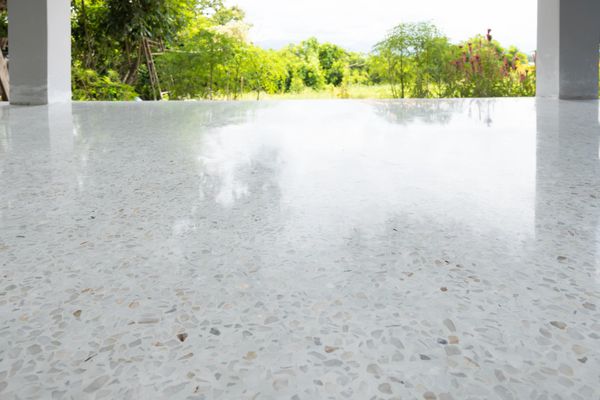See the Difference with 74 Epoxy Flooring Gallery

























































Epoxy Explained
Epoxy flooring is a durable, protective coating formed by a chemical reaction between a two-part resin and a hardener, creating a rigid plastic material that bonds strongly to a concrete substrate. It's valued for its resistance to wear, chemicals, and impact, making it suitable for high-traffic commercial, industrial, and residential areas like garages and warehouses. Epoxy flooring can be customized with various colors, patterns, and finishes, including high-gloss, metallic, or flake systems, and it offers a seamless, easy-to-clean, and long-lasting surface. Key Characteristics and Benefits
- Durability: The cured epoxy forms a tough, resilient surface that can withstand heavy foot traffic, heavy machinery, and impacts.
- Chemical Resistance: Its non-porous, low-porosity surface prevents spills of chemicals, oils, and cleaners from penetrating, making it ideal for industrial settings.
- Adhesion: Epoxy forms a strong, secure bond with concrete, creating a reliable and long-lasting surface.
- Aesthetics: Available in many colors and finishes, it can provide a sleek, glossy, or decorative look to any space.
- Ease of Maintenance: The seamless, smooth surface is easy to sweep and clean, and its non-porous nature prevents bacteria and germs from hiding.
- Safety: Anti-slip additives can be incorporated into the coating to enhance safety and reduce the risk of falls.
- Cost-Effectiveness: Due to its durability and long lifespan, epoxy flooring is a cost-effective solution for high-wear environments.
Common Applications
- Garages and Basements: Popular for residential use due to its ability to withstand vehicles, heavy objects, and spills.
- Industrial Settings: Used in factories, warehouses, and processing facilities for its chemical resistance and ability to handle heavy loads.
- Commercial Spaces: Found in showrooms and other high-traffic commercial areas for its aesthetic appeal and durability.
- Institutional Settings: Quartz-filled epoxy flooring is used in places like schools and hospitals for its durability, aesthetics, and slip-resistance.
How it WorksEpoxy flooring begins as a liquid. The two components, a base (resin) and a hardener, are mixed together, initiating a chemical reaction that causes the liquid to harden into a solid, durable plastic material. This process creates a strong bond with the underlying surface
This website uses cookies.
We use cookies to analyze website traffic and optimize your website experience. By accepting our use of cookies, your data will be aggregated with all other user data.